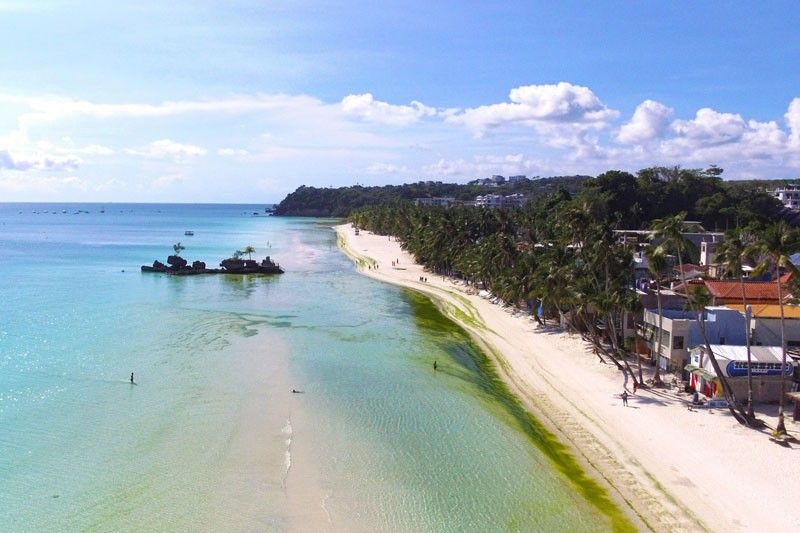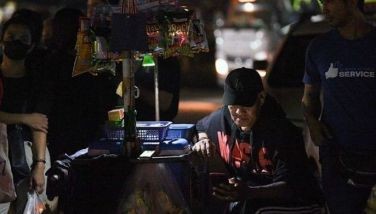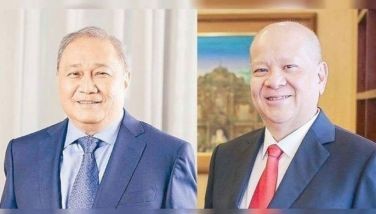Tourism is poised for growth

MANILA, Philippines — The tourism industry has been making headlines recently.
Despite the closure of a top tourist spot last April, the sector has shown resilience and is now poised to be a major contributor to economic growth, if it continues to move toward sustainable practices.
The Department of Tourism (DOT) earlier reported that foreign arrivals in the first half hit a record high of 3.7 million, a 10.4 percent rise from the 3.35 million in the same period last year, pacifying fears that arrival numbers would slump due to the closure of Boracay.
This puts the country on track to hit its 7.4 million foreign tourist arrivals target for this year under the National Tourism Development Plan (NTDP).
Among the drivers of this growth are the continued arrivals from the Philippines’ top source markets and the influx of Chinese tourists.
Latest available data from the DOT show that Chinese arrivals have grown 43.81 percent to 559,289 tourists in the first five months.
Fernando Roxas, executive director of the Asian Institute of Management (AIM) Dr. Andrew Tan Center for Tourism (DALT), said over the next five years, 700 million Chinese are forecast to be tourists, a market the Philippines should tap.
“The Philippines is a natural market for Chinese tourists. But there is a dearth in local Chinese speaking tour guides. A strategic plan at the DOT level should have foreseen that and made provisions for it,” Roxas told The STAR.
Data from the DOT’s Annual Visitor Survey 2017 showed that Chinese tourists in the country spent almost $50 per day with an average length of stay of 6.24 nights.
Shopping, sightseeing, and nature and adventure were the usual activities of the Chinese travelers.
Apart from the arrivals numbers, the tourism industry has also been generating more visitor receipts, with visitor receipts amounting to P140.5 billion in the first four months of the year, a 53.93 percent hike from the P91.3 billion recorded in the same period last year.
In 2017, the tourism industry contributed 12.2 percent to the country’s Gross Domestic Product (GDP), with tourism direct gross value added (TDGVA) amounting to nearly P2 trillion, according to data from the Philippine Statistics Authority (PSA).
“We are ecstatic to have maintained an eight-year growth streak in our recorded annual tourism receipts, complemented by the sustained growth of our foreign visitor arrivals,” Tourism Undersecretary and spokesperson Benito Bengzon Jr. told The STAR.
“This industry continues to prove its resilience amid security issues, economic conditions and other internal and external factors that have impacted the other industries,” he added.
While the tourism sector seems to be on track with its targets in terms of arrivals and revenue figures, industry stakeholders believe there is still much more to be done.
“In terms of what is the overall vision for tourism, there is still a lot to do especially on the sustainable tourism front,” Rajah Travel and Tours president Aileen Clemente told The STAR.
“We have to reevaluate the standards we hold ourselves to. We see the big global players eliminating single use plastics, for instance, within their properties,” she said.
Meanwhile, Roxas said there is a need to change the mindsets of Filipinos about tourism, in a bid to be more welcoming to tourists.
“People’s mindsets have to change from seeing tourists just as sources of income, to guests which need to be welcomed and showered with hospitality. Tourism is selling an experience who needs to be managed carefully,” Roxas said.
The six-month closure of Boracay due to environmental problems put the spotlight on the tourism industry earlier this year.
Tourism Congress of the Philippines (TCP) president Jojo Clemente said the industry has learned from the closure of Boracay.
“The lessons of Boracay have taught us that we need to protect our destinations and ensure that the environment is preserved,” Clemente said.
Roxas applauds the decision of the government to close Boracay due to sustainability issues, noting that it took a lot of political will.
“I do hope that it doesn’t stop there. What the industry requires is a cohesive strategy to steer the industry in the right direction,” Roxas said.
In his State of the Nation Address (SONA) earlier this week, President Duterte said the closure of Boracay is just the beginning of a new national effort to restore the country’s tourist destinations which are in need of urgent rehabilitation.
“This is just the beginning. For the other tourist destinations needing urgent rehabilitation and enforcement of environmental protection, other laws shall soon follow,” Duterte said.
In response to this, Tourism Secretary Bernadette Romulo-Puyat affirmed to The Star that the government plans to rehabilitate other top tourist spots, but declined to disclose specific destinations.
“We at the DOT welcome this because it just means the President is serious about protecting our environment and the health of our tourists,” Puyat told The STAR in a text message.
She said the Boracay experience is an ultimate lesson in balancing development and protecting the environment.
“Lessons learned are not for Boracay alone, but also for the other island destinations around the country,” she said.
Clemente said the country’s tourism sector needs to work on developing more destinations, but keeping sustainability in mind.
“What we need to focus on now is destination development so we can further expand our product lines and more importantly, bring the benefits of tourism to more parts of the country,” the TCP president said.
He said there are still so many places to see and visit in the country, but which need to improve their accessibility, infrastructure, and facilities.
“If we can bring more destinations online within the next few years, Philippine tourism can even possibly be the leading contributor to the GDP,” Clemente said.
Clemente earlier said that developing more destinations would also result in creating more job opportunities for the tourism sector.
The PSA had reported that there were 5.3 million Filipinos employed in tourism characteristic industries in 2017, a 0.9 percent rise from the 5.2 million employment recorded in the year before.
Despite the rise in employment, this was the first time the growth rate fell below one percent since 2001. Previously, the slowest growth was recorded in 2005 at 1.9 percent.
Roxas cited a recently completed study from the DALT Center for Tourism which looked at the impact of tourism on the economy using data from 2000 to 2017. Among the findings of the study were that the growth in tourism creates more job opportunities, mitigates poverty, and improves income distribution.
“Tourism can employ people with the lowest skill level training, which can’t be said for manufacturing. And tourism provides livelihoods without requiring people to leave their families to take jobs overseas,” Roxas said.
Industry stakeholders emphasized that the development of the tourism industry is a joint effort that needs to be taken by both the government and the private sector.
- Latest
- Trending





























